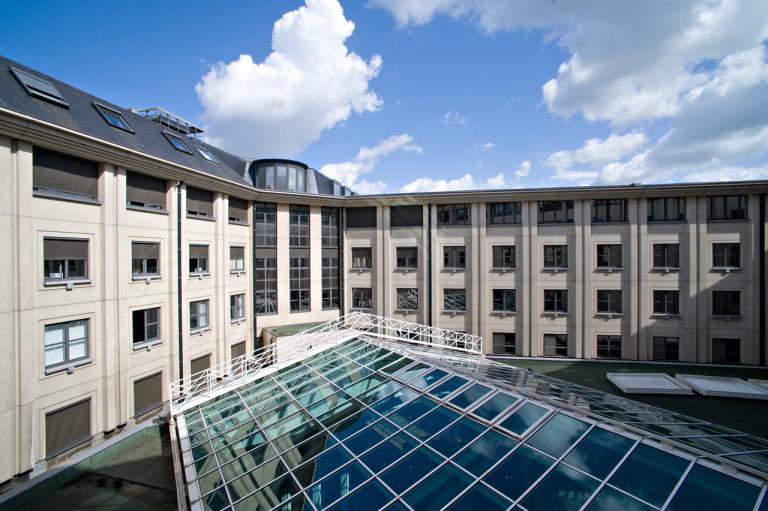How can you make your glass roof “smart”?
Do not be fooled: if you should believe this to be a rather cheap commercial term, a glass roof structure can only be as “smart" as the pre-set objectives and expectations. But are you aware of the many possibilities that you have to determine yourself your objectives and expectations?

Intelligent concept & light as a medicine
Maybe, we should first of all think about why it is “smart” to go for a glass roof structure. Since several years, researchers are spending more and more time on “light as a medicine”. On Google, this term generates a great many interesting and comprehensive search results with detailed explanations on which light spectre can be used for which cure. Let us, for now, leave these theories for what they are and focus on what we ourselves experience in our direct environment.
For instance, you often hear it at the local baker or butcher in a dark and rainy period: people complaining and yearning for some sunshine, people who above all just want to be able to come out. This is also reflected in buildings, people gather spontaneously in luminous areas or in spaces with an outdoor climate. These are often meeting places that contribute to the good atmosphere in a building. An atrium as a meeting place, a place to welcome people... Furthermore, it is a known fact that people who feel comfortable and at home are also more productive.
In short, people’s expectations of a glass roof, atrium, skylight... can entail much more than a mere structural element acting as eye-catcher.
Smart structures respond spontaneously to their environment
In the concept phase, you may, apart from passive materials, want to integrate active materials as well. Active materials are able to respond to their environment and adjust themselves to the aimed comfort according to pre-set conditions.
Let us begin with the technology behind a smart tinted glass system, an advanced light management system to control overheating and glare. The glass system consists of glass and a complete control system enabling it to ‘tint’ the glass in maximum 3 minutes while maintaining its transparency. The system also registers your preferences for glass shades (related to time, available sunlight, etc.) and considers factors such as weather conditions. In this way, you always get the performances that you expect. A cloud solution is able to communicate with your building management system and monitors the condition of your atrium or skylight in real time so that, depending on the need, external and/or on-site support can be provided. When approaching the design with the right knowledge, the identity of the design can be respected and your glass roof can be made “smart”, adding extra comfort.
Let us focus for a while on the realisation of a controlled environment. As said before, such rooms can create huge added value to the perception of and atmosphere in a building. The art of climate optimisation started with the construction of greenhouses. A climate can be defined as a continuous adjustment of temperature and humidity level, but also the amount of UV can be a very important requirement, for instance for plants. A control module that is connected to a weather station and sensors can control several items such as sun blinds, a smart glass system, opening parts, smoke vents... This can even be organised per area as every area may have other requirements. So what it boils down to is that your control system should be designed such that it responds appropriately to both internal and external measurable information. The system and structure must also be protected against themselves in case of heavy wind or rainfall. In-depth expertise is crucial here.
It should be clear by now that the expectations and corresponding objectives of your glass roof structure can contribute to added value you may at first not even have considered. We often experience that in the final design of a concept: it is exactly this structural element that represents a milestone in the construction process everyone is looking forward to.
Fields of excellence: S.M.A.R.T as management tool or just that little extra?
In an industry in which project-specific solutions take precedence over standard solutions, an integrated approach combining different technologies and perfectly gearing materials to one another is crucial. This is best done through a centralised approach and a broad network, resulting in one central location with information and in one single point of contact.
The S.M.A.R.T principle (Specific, Measurable, Acceptable, Realistic, Time-related) is a popular management term used to gradually improve the communication within organisations as well as their efficiency and profitability. In a solution-oriented project approach, S.M.A.R.T ensures the perfect and controlled implementation of a solution that meets the aesthetic requirements and the pre-set specific preconditions. Various technologies must communicate with one another with respect for the added value and individual nature of every solution. It is therefore essential that the S.M.A.R.T concept integrates all possible solutions.
If, through our comprehensive expertise, we can summarise the expectations and objectives in a corresponding S.M.A.R.T concept in which all conditions are reduced to their essence and all available technologies are optimally geared to one another, this will automatically result in the best possible price-conscious response that can be formulated to an idea.

Limits of an intelligent approach
A limit is difficult to establish but good basic principles are the objective of the concept, the comfort of its users and the sustainability of the structure. I admit, this is a rather broadly defined limit. Then, we haven’t even mentioned aspects such as acoustic comfort, easy maintenance, electrically controlled ventilation, fire protection technology...
In short, welcome to a fascinating world with multiple interesting approaches for every single project.